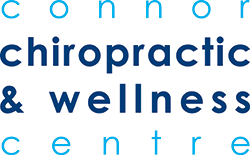Trigger Points: Unlock the Mystery
Are you tired of living with nagging pain that just won’t go away? Have you heard of trigger points but aren’t quite sure what they are or how they affect your body? Well, you’re in the right place. In this blog, we are going to dive into the world of trigger points, uncovering what they are, how they develop, and most importantly, how you can find relief.
What Are Trigger Points?
Trigger points are small, tight knots that form in the muscles and can be felt as tender spots. When pressure is applied to these points, these localized areas of muscle tension can radiate pain to other areas of the body, a phenomenon known as referred pain. If left untreated, trigger points can lead to pain, dysfunction, and decreased flexibility.
How Do Trigger Points Develop?
These can develop for a variety of reasons, including:
- Overuse or repetitive use of a muscle can lead to the formation of a trigger point.
- Poor Posture, especially if prolonged, can place stress on a muscle, contributing to developing these points.
- Muscle Imbalances, where one muscle is weak or tight, can create imbalances that contribute to the formation of trigger points.
- Emotional Stress can present as muscle tension, increasing the likelihood of trigger point development.
- Injury or Trauma to a muscle or surrounding tissue, such as a strain or tear, can result in the formation of trigger points as part of the healing process.
Identifying Trigger Points
Now that we know what a trigger point is and how they develop, let’s talk about how to identify them:
- Palpation: Using your fingers, gently press along the muscles, paying attention to any areas that feel tender or knotted.
- Range of Motion: Notice if certain movements cause increased pain or discomfort, as this may indicate the presence of trigger points.
- Referred Pain Patterns: Be aware of any pain that seems to radiate from one area to another, as this can be a sign of trigger points.
Relieving Trigger Point Pain
The good news is that trigger points can be effectively treated, often providing immediate relief. Here are some treatment options to relieve the pain:
Dry Needling: This technique involves the insertion of acupuncture-like needles into the taut band of the muscle, eliciting a twitch response similar to a deep tissue massage. It can provide immediate relief and improve flexibility by deactivating the trigger point.
Transcutaneous Electrical Nerve Stimulation (TENS): TENS therapy uses electrodes placed around the affected area to deliver controlled and comfortable electrical impulses, effectively releasing muscle tension and providing relief.
Manual Trigger Point Release: Therapists apply pressure to the point or adhesion in the muscle, gradually softening the tense area. Additionally, they may manipulate the muscle from a contracted to a relaxed state to alleviate discomfort, also known as Active Release Technique (ART).
Manual Therapy: Joint mobilizations and manipulations aim to correct joint restrictions that may contribute to trigger point development, relieving constant muscular strain.
Massage Therapy: Massaging the affected muscle increases blood flow, reduces stiffness, and alleviates pain. Targeted pressure on trigger points helps release muscle tension.
Home Remedies: Tips on How to Prevent and Manage trigger points
- Maintain proper posture, especially during prolonged sitting or desk work, standing, and lifting. Take regular breaks!
- Ensure an ergonomic workplace setup, with proper chairs, desks, and equipment to support spinal alignment and reduce strain.
- Invest in a supportive pillow for optimal sleeping posture.
- Incorporate stretching and self-trigger point release techniques into daily routines. This can help relax tight muscles and reduce the sensitivity of the trigger point.
- Engage in strength-building exercises to enhance muscle support and stability, and to correct muscle imbalances.
- Apply heat therapy to relax tense muscles and alleviate the discomfort of a trigger point.
- Cold therapy such as an ice pack can help numb the pain associated with a trigger point.
- Practice relaxation techniques such as yoga, mindfulness, or deep breathing for stress relief.
Say Goodbye to Pain
The discomfort caused by a trigger point can affect your activities of daily living as well as your leisure activities. By understanding the causes of these tight, tender bands in the muscle. By combining professional intervention with proactive self-care measures, you can effectively manage trigger points, decrease pain, and promote overall musculoskeletal health. It is important to consult with a healthcare professional such as a physiotherapist, chiropractor, or massage therapist to determine the most appropriate treatment plan for your specific condition. They can provide personalized recommendations based on your symptoms, medical history, and individual needs. Take control of your pain and say goodbye to the discomfort.


